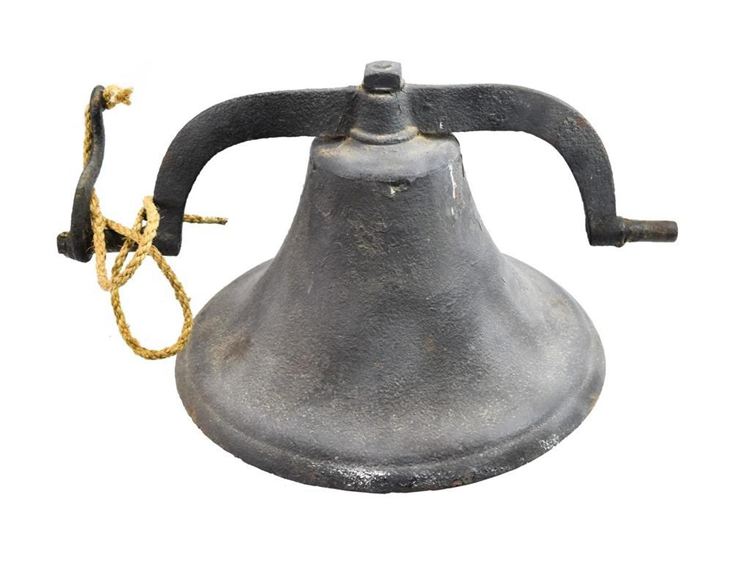
Does an old cast iron bell give you nostalgia? People used bells to mark the passage of time long before the cell phones. They also used bells to signify specific events and religious celebrations. Thus, antique bells are an essential part of many cultures.
The European heritage showcases a range of bells used in various places. There are church bells, farm bells, fire bells, dinner bells, and school bells, among others. The materials used to make bells were mostly bronze and molten copper until the iron bell was introduced.
Although we no longer use bells, antique cast iron bells are still valuable. Collectors from all over the world are interested in these early bells. If you are someone interested in old iron bells, this article is for you!
Stick with us to learn about the history of antique cast iron bells, their types, markings, and present-day value. We will also guide you on how to restore your antique cast iron bells to ensure they do not rust and lose their value.
Table of Contents
What Are Cast Iron Bells?
Cast Iron bells are made from molten iron. Before iron, pottery and metals like copper and bronze were used to make bells. However, there came a time when the need to make giant bells emerged.
People tried discovering ways to make larger bells that were unique in style and shape. That is when the cast iron technique became popular. The old Chinese technique of pouring molten iron into molds was used to create bells of different shapes and sizes.
History of Cast Iron Bells
The history of bell-making dates back to 2000 B.C. It was first practiced in East Asia and then used in Europe around the fourth or fifth century B.C. The large bells were made in foundries for use in various spaces. Archaeological excavations have revealed church bells, farm bells, fire bells, school bells, train bells, and even household bells.
The John Taylor & Co. and Whitechapel Bell Foundry were early bell foundries in Britain. These foundries have signs of furnaces which proves the use of the bell casting method in the earliest of times. In other parts of the world, some foundries are still active in creating bells. They use either 19th-century practices or modern foundry techniques. However, these bells are mainly used for decorative purposes to appreciate the old times.
How Cast Iron Became the Preferred Metal for Bells?
Iron was not the first metal of choice for bell casting. Bells were initially made out of an alloy consisting of bronze to produce a consistent sound. People started experimenting with other metals when the need for more enormous bells arose. They tried to create different shapes and sizes of bells, which led to the discovery of newer materials and bell-making methods.
The experimentation resulted in the use of a new alloy of tin and copper. Other metals used to make bells included brass, silver, and gold. It is said that rich people threw coins inside the furnace when manufacturers prepared the bells. However, there is no authentic evidence for this.
Bell manufacturers landed on using molten iron in the 13th century B.C. They discovered that using cast iron to make bells yielded heavier bells in all shapes. These early cast iron bells weighed more than 150 kgs. After 1000 AD, iron bells became the talk of the town leaving behind all other bells.
Casting Process of Iron Bells
The casting process for iron bells has remained the same over the ages. The general method is to cast the bell mouth down in a mold consisting of two parts. The first part is called the core, and the second is the mantle placed above the core. The molten metal is poured into the air space created between them. There should be no overflow as this is dangerous and can degrade the bell’s sound properties.
The four main steps of the casting procedure are described below.
Measuring and Templating
The first step is to calculate the exact profile of the bell. This measurement is done to accurate specifications with the help of templates.
Mould Construction
The second step is creating the molds for the bells. The exact molds are designed for the inner and outer sides of the bell. This is also called a “false bell,” which is then dried in a kiln. The bell makers can proceed to the casting stage when the mold is dry.
Pouring Metal
The outer and the inner mold are clamped together to create a space for pouring metal. The liquid metal is first skimmed to remove any impurities. Then, this metal is poured into the mold. Keeping the temperature high at this stage is crucial. This high temperature makes the pouring process extremely dangerous.
Cooling and Removing the Bell
After the metal has completely cooled down, the mold is removed. The new cast bell is carefully extracted from its case. Bells take different times to cool down, depending on their size. Small bells (less than 500 lbs) can be extracted the following day. However, a larger bell may take up to several days to cool down completely.
Cast Iron Bell Sizes
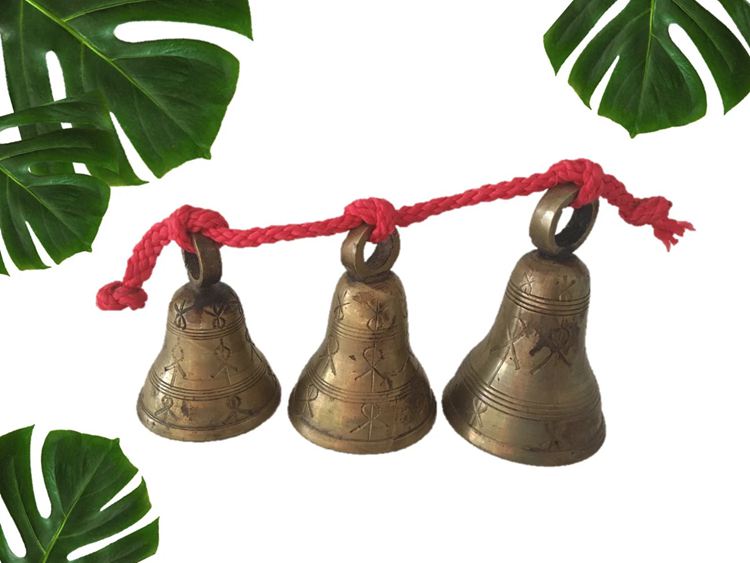
There are many types and styles of old cast iron bells. They were distinguished based on their sizes and utility. Iron bells were used from public buildings to households. The primary purpose of the bells was to summon or alarm people. The larger the bell, the greater the sound. Here are some of the most popular types of antique bells
Church Bells
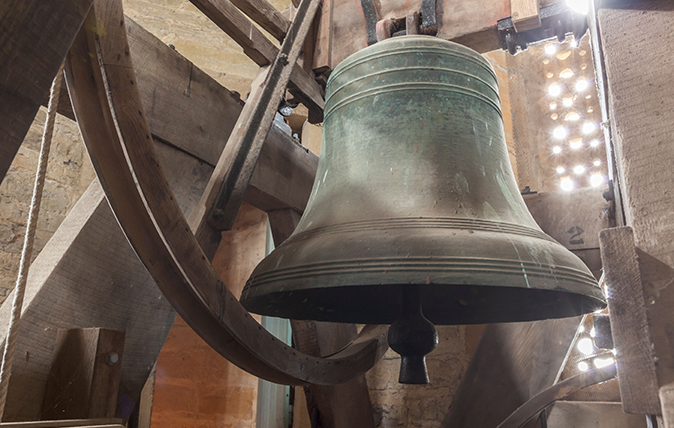
Church bells were common in European culture. Christians have been using bells in churches since 400 A.D. The old bells in many churches were made huge to make them louder. The prominent cathedrals and churches had bells weighing almost 5000 lbs.
The diameter of a church bell ranges from 27 to 62 inches, depending on how loud it is. People installed smaller church bells in chapels to summon the crowds. Later, the bells were fine-tuned by varying their length and thickness to create different sounds.
Antique Farm Bells
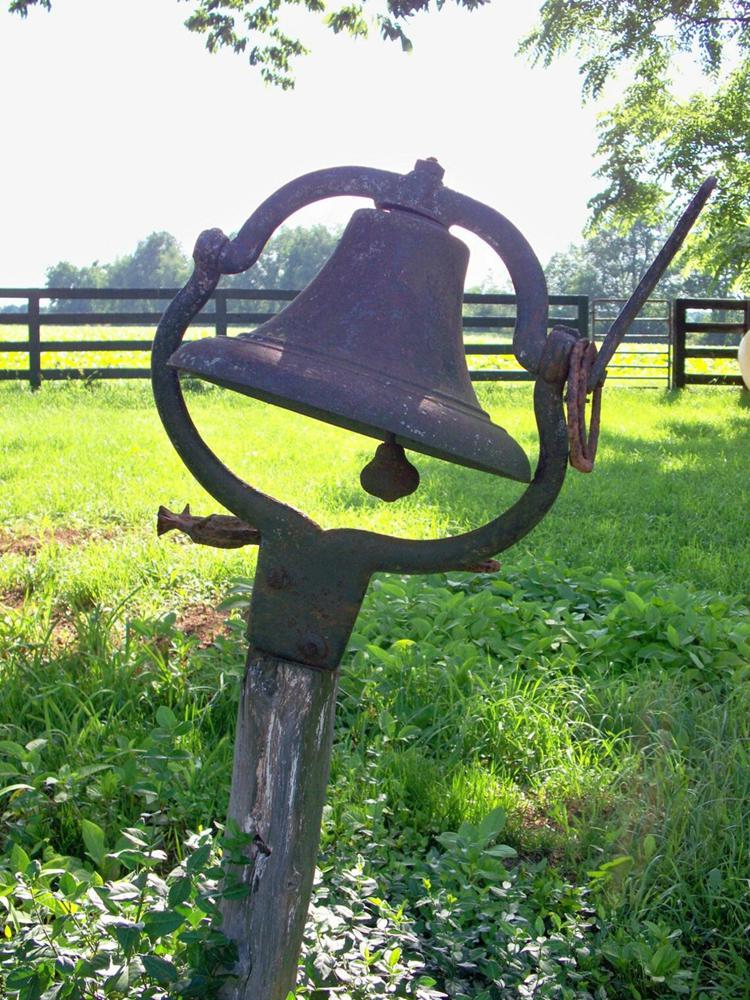
A farm bell was a crucial part of farming in Nordic countries and early America. Farm bells became popular sometime in the 1800s when they were widely adopted in the U.S. Their primary purpose was to summon the farmers working on the fields. The bell ringing indicated that it was time to put the tools down and go for lunch or dinner.
You can distinguish an antique farm bell from its counterparts by its dimensions. The typical farm bell was small in size and diameter. Generally, farm bells weigh between 25 and 100 pounds and have a diameter of 10 to 20 inches.
The manufacturers kept the farm bell (also known as a dinner bell) smaller than other bells. This design made sense as their sole purpose was to call people from the farmland. Also, the smaller size of bells made them easy to transport.
School Bells
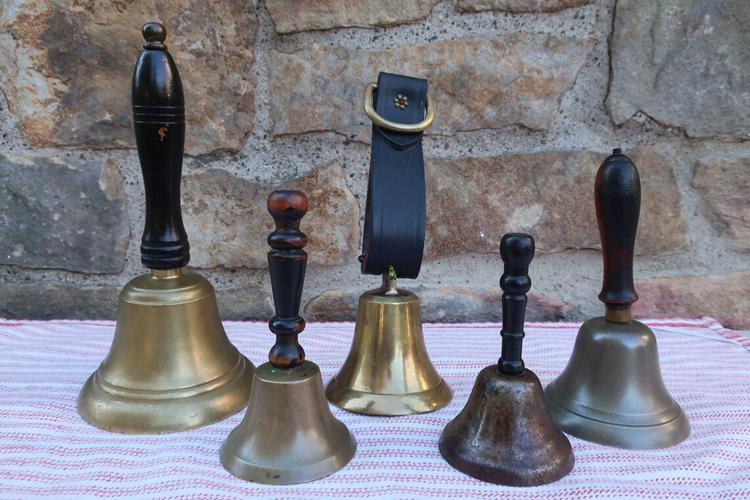
Most school bells were larger than farm bells but smaller than church bells. The usual weight of the school bell was between 165 to 1275 pounds. The diameter of the school bells was between 20 and 28 inches. These bells were usually placed in the attic and had a solid frame.
There was a need to differentiate between the sound of a church bell and the school bell. Therefore, school bells had a sharper, deeper sound due to their thickness and smaller size.
Train Bells
Train drivers used train bells to alert people who were on the tracks. Most train bells had a diameter of 11 to 17 inches and were smaller than other iron bells. They also had markers on their surface to connect them with a particular train.
Similarly, passenger ships, boats, and warships usually had bells on the upper deck. The sailors used these bells to mark time on the ship or boat. Bells were also essential to indicate heavy fog for the safety of the passengers.
Steam Locomotive Bells
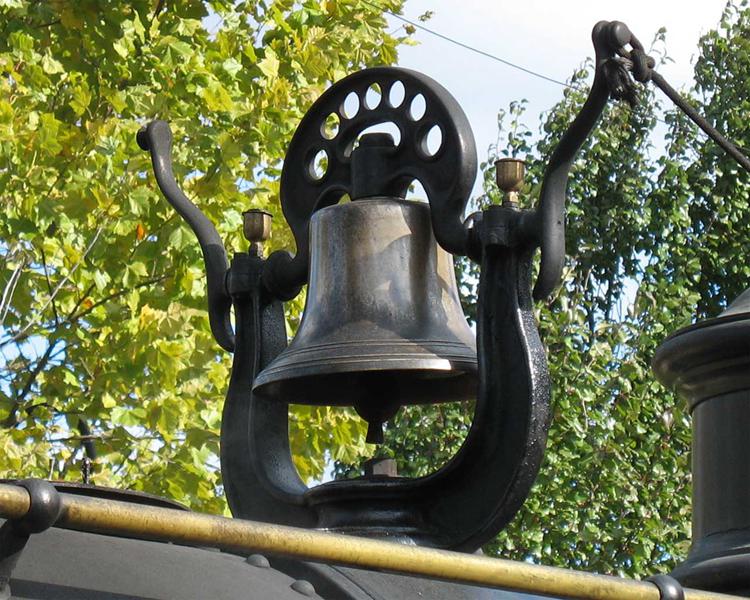
Bells were standard equipment on steam locomotives in North America from around 1840 onward. Their purpose was to make noise, alerting people and animals of an oncoming train. Steam locomotive bells were usually made of cast bronze or brass. They were typically between 11 and 17 inches in diameter (measured at the widest part). They could weigh hundreds of pounds. When a steam locomotive was scrapped, the locomotive bell was often one of the few items saved from the torch.
Value of Antique Cast Iron Bell
As the need for old cast iron bells has diminished, they have become antique and valuable. The design, bell metal, and quality of ancient times are unbeatable in today’s age. Therefore, these bells are worth more than you think.
The value of iron cast bells is that new sellers cannot remake them like before. These pieces are unique in their production, and people treat them as collectibles. If you also admire the old iron bells, you can determine their worth based on several factors.
The value of the iron bell varies depending on its weight, size, material, and utility. You can find them in antique stores, online websites, and flea markets. However, you must know the worth of what you are purchasing. Here are some guidelines to help you determine the value of an old iron bell.
Value-Based on Size
The value of bells depends on their size. The giant bells are worth more than the smaller ones. The large diameter and overall length can make a bell more valuable. Here are some examples.
Dinner Bells
Dinner bells were small bells used to summon the family for dinner. They were also available in hand-held sizes. These small sizes have made dinner belles cheaper than other bells. If you are looking to buy your first antique cast iron bell then dinner bells are an excellent choice.
- Antique Cast Iron Dinner Bell – listed for $38.95 on Etsy.
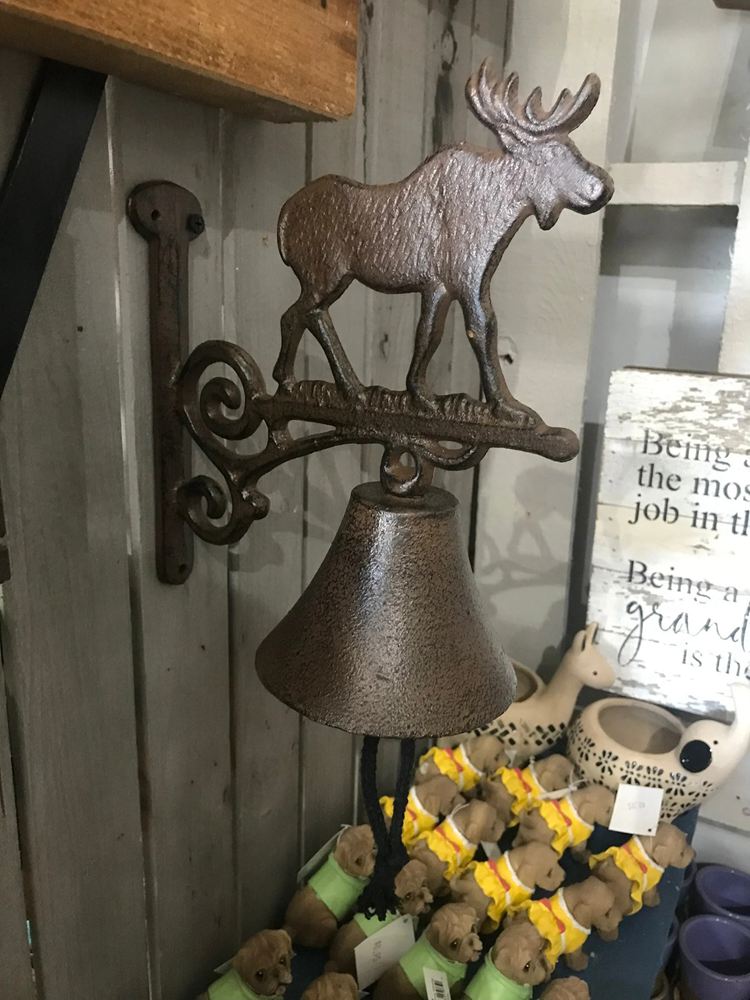
Farm Bells
Farm bells were installed at farms to call workers from the fields. Since these bells are generally more significant than the average household bells, they are worth more. They were also larger as their sound needed to reach far away.
- Vintage Style Large Farm Bell –listed for $103 on eBay.
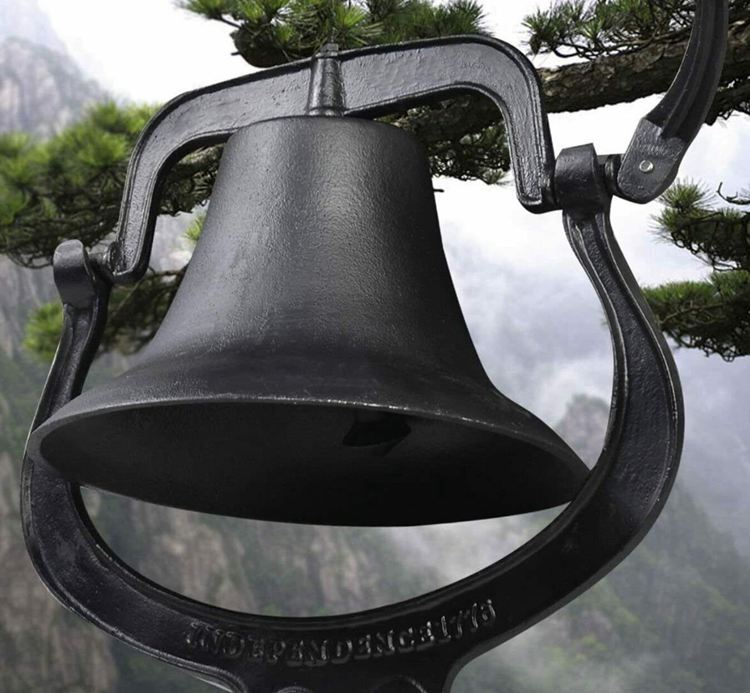
School Bells
School bells are large bells that usually come with a frame. They are heavier and were used more than the other bells. They are priced higher due to their weight and sharp sound.
- Antique Cast Iron 19th-century School Bell – listed for $600 on eBay.
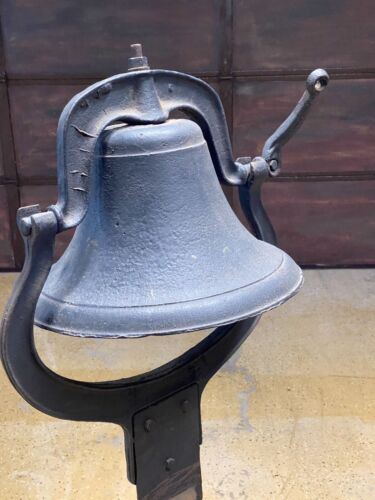
Church Bells
A church bell is quite heavy with a large diameter. An antique church bell is usually sold for above $500. You will have to spend more to get a good deal on these original vintage pieces.
- Large Cast Iron Church Bell with Frame – listed for $2300 on eBay.
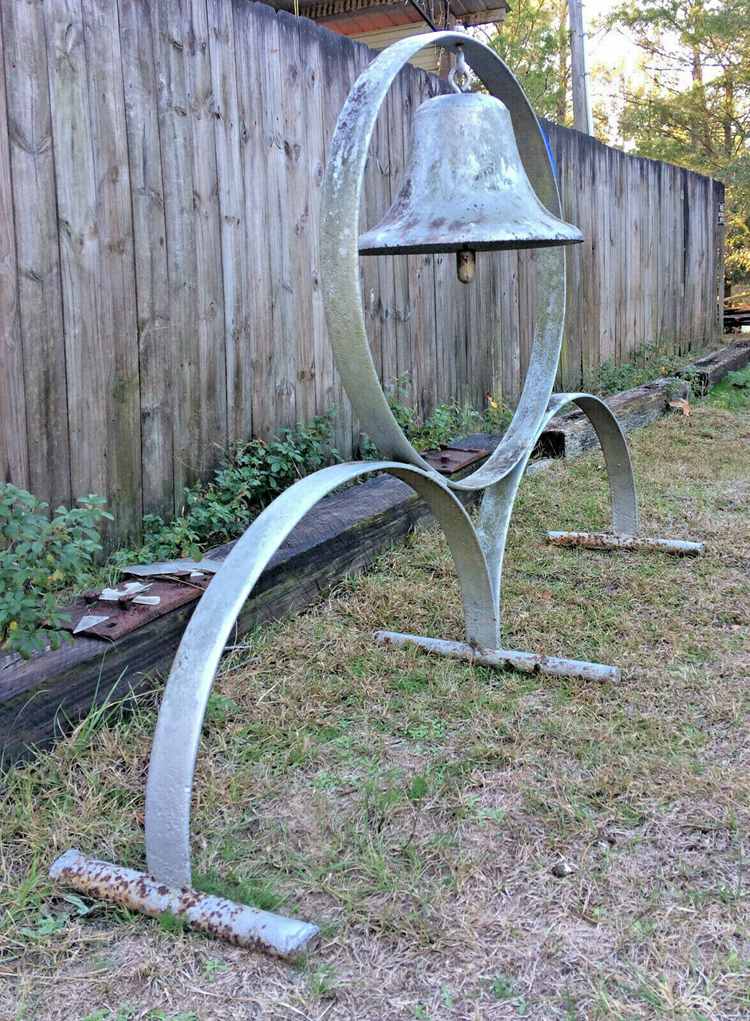
Value-Based on Design
The value of bells also depends on their design. Vintage bells with various design elements usually cost more. The more intricate the design, the higher the value. It is common to see animals such as horses, bears and birds in the designs of antique bells.
- Decorative Bell with a Mounted Horse Design – listed for $99 on Etsy.
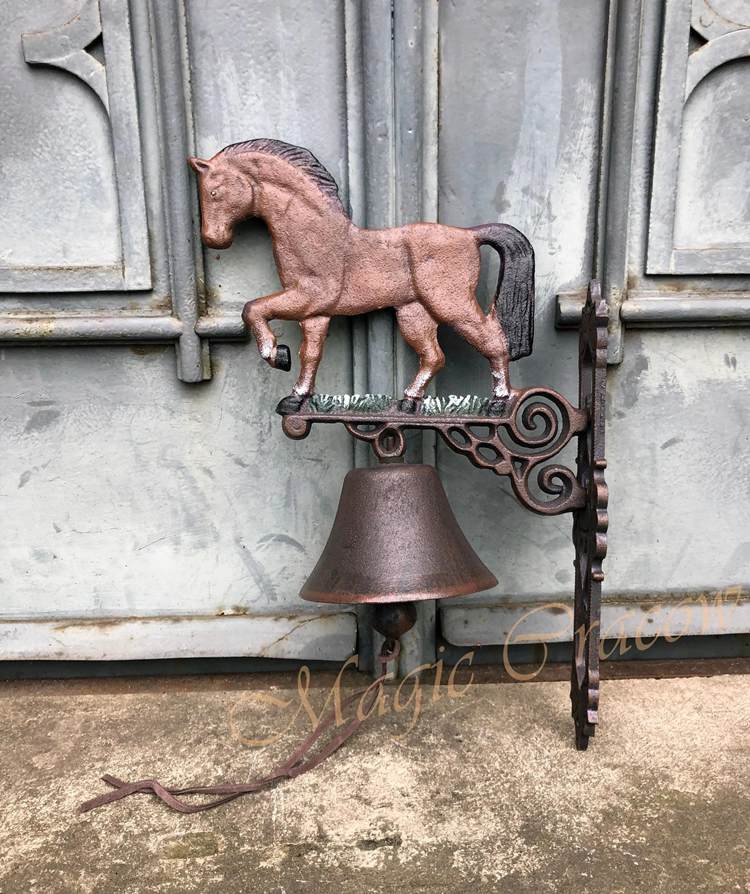
Value-Based on Manufacturers
The bells made by some famous old manufacturers are considered more valuable based on their production year. One such manufacturer is McShane bell foundry. They have been in operation since 1856 making large bells. The bells made by this foundry are sold for more than $2000. The heavier models can even cost you up to $15,000.
- Pre-owned Church Bell by McShane bell foundry – listed for $9000 on eBay.
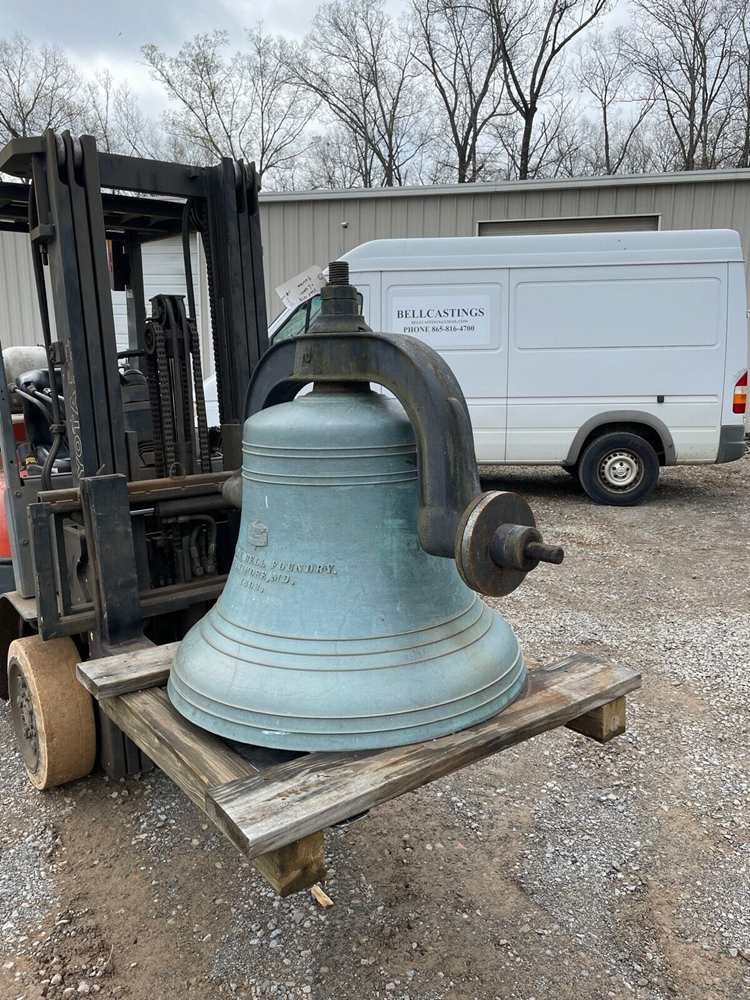
Another famous old brand is C.S. Bell and Hillsboro. They were also in operation in the 1800s, and their bells are very valuable. If you do not own a church or a museum, these pieces will not be of any interest due to their larger-than-life sizes.
How to Identify Antique Bells
Antique cast iron bells can be a great addition to your collection if you are an enthusiast of old collectibles. But, it is best to be careful when identifying an original vintage piece. It is easy to confuse rustic-looking bells with genuine antique ones. To ease the selection process first, you need to know the parts of an old bell. If you can identify the parts accurately, then you can move on to judging their authenticity.
Parts of a Cast Iron Bell
- Crown: The crown is the curved piece placed at the top of the bell. It helps to suspend the bell through a chain or a rope.
- Head: The head of the bell lies between the shoulder and crown. It is also located on the top of the bell.
- Shoulder: The shoulder is located just below the head of the bell. It is a curved portion in the upper area of the bell.
- Waist: The waist is the central part of any bell. The waist is where bells are flared outwards to take a traditional shape.
- Mouth: The wide circular open section used to ring the bell is called its mouth.
- Lip: The mouth’s edge is called the bell’s lip. The lip usually has a decorative touch.
- Bead Line: The raised line around the bell body is called the bead line. The Bead line has no specific function in the bell ringing but is simply a decorative component.
- Sound Ring: The area between the bead line and the lip is called a sound ring or sound bow.
- Clapper: As the name suggests, this part is used to ring the bell. The clapper is hanging inside the bell, which produces the sound upon striking it.
- Yoke: The yoke is the piece from where the bell is hanged.
Authenticating an antique bell is difficult. Always ask the seller questions about the bell’s history. Good sellers will answer all questions thoroughly and will never try to change the subject. Now that you know about parts of a traditional bell consider the following points when authenticating an antique iron bell.
Bell Markings
As we mentioned, old manufacturers’ bells are worth more than others. Therefore, you should look for the bell markings before buying a bell. The markings on the bell are generally present on either side of the yoke. You can check these markings to make sure that the bell is actually antique and produced by a famous manufacturer.
Casting Line
Another critical thing to check is the casting or parting line in the bell. There should not be any casting line visible in the bell. You can safely assume that the bell is not authentic if it has a casting line. Original cast iron bells were made as a single piece and thus, did not have any parting or casting line in them.
Edges of the Bell
The edges of the bell are also important when determining its authenticity. Since we are talking about bells over 100 years old, the edges should not be sharp. Due to time, the edges of original bells are usually soft and irregular.
Newer bells will have sharp edges that show no deterioration. It could also be the case that the manufacturer has tried to make them irregular on purpose. Therefore, you must inspect them closely and decide according to your best judgment.
Body of the Bell
The last thing you need to inspect closely is the bell’s body. Antique bells clearly show marks of casting and may even be asymmetrical. The body should show signs of wear and tarnishing. The decorative ridges should also be heavily worn.
Look for these characteristics to determine the originality of any antique cast iron bell. If the bell lacks any of the characteristics mentioned above, it is probably a fake or a recast making it less valuable.
Cast Iron Bell Restoration
Once you have found the antique bell in your desired shape, it is necessary to restore and protect it. If you take care of them, they will be worth more in the future. You must clean your bell to protect it from moisture which can cause rust.
Here are some steps you can take to protect your cast iron bell:
- Clean the bell properly but not in a harsh way. You need to preserve its coating. Do not give your bell a new coating, as this will decrease its value.
- Clean the inner and outer regions of the bell with warm water.
- Use the wire brush to remove the dirt and rust off the bell.
- Take a mild detergent to clean the body of the bell. It is better to first test the solution on the inner surface to ensure it does not ruin the old metal.
- Scrub the surface gently to avoid ruining the patina that has formed on the bell’s surface
- Rinse it off with the use of warm water.
- Finally, take a microfiber cloth and dry the bell.
- Once the cleaning process is complete, you must regularly wipe off the built-up dust with a soft cloth.
Key Takeaways
Thank you for reading our guide on Antique Cast Iron Bells. We hope it has provided you with valuable information and you were able to learn something new. For your convenience, we have summarized some key points for you.
Size, Design, and Brand
The value of an old cast iron bell depends on several factors, including the size, design, and brand. Generally, a larger size with more diameter is priced higher. Similarly, designer pieces are worth more than others. Antique pieces from old manufacturers like the McShane Bell Foundry are also expensive.
Do Not Fall for Replicas
Check the bell markings, casting line, edges, and body to ensure that the bell is an original cast iron and not some modern replica. The bell markings should be on the yoke. There should be no trace of a casting line. The edges and the body of the bell should indicate wear and tarnishing. Asymmetrical qualities are also a good sign as the casting process was done by hand.
If you have any questions, feel free to ask in the comments below. Do let us know which bell style is your favorite and have a great day!





![Where To Sell Antique Furniture In 2022 [Ultimate Guide]](https://www.jacquelinestallone.com/wp-content/uploads/2022/09/Etsy-Your-Place-To-Buy-And-Sell-All-Things-Handmade-600x450.jpg)


